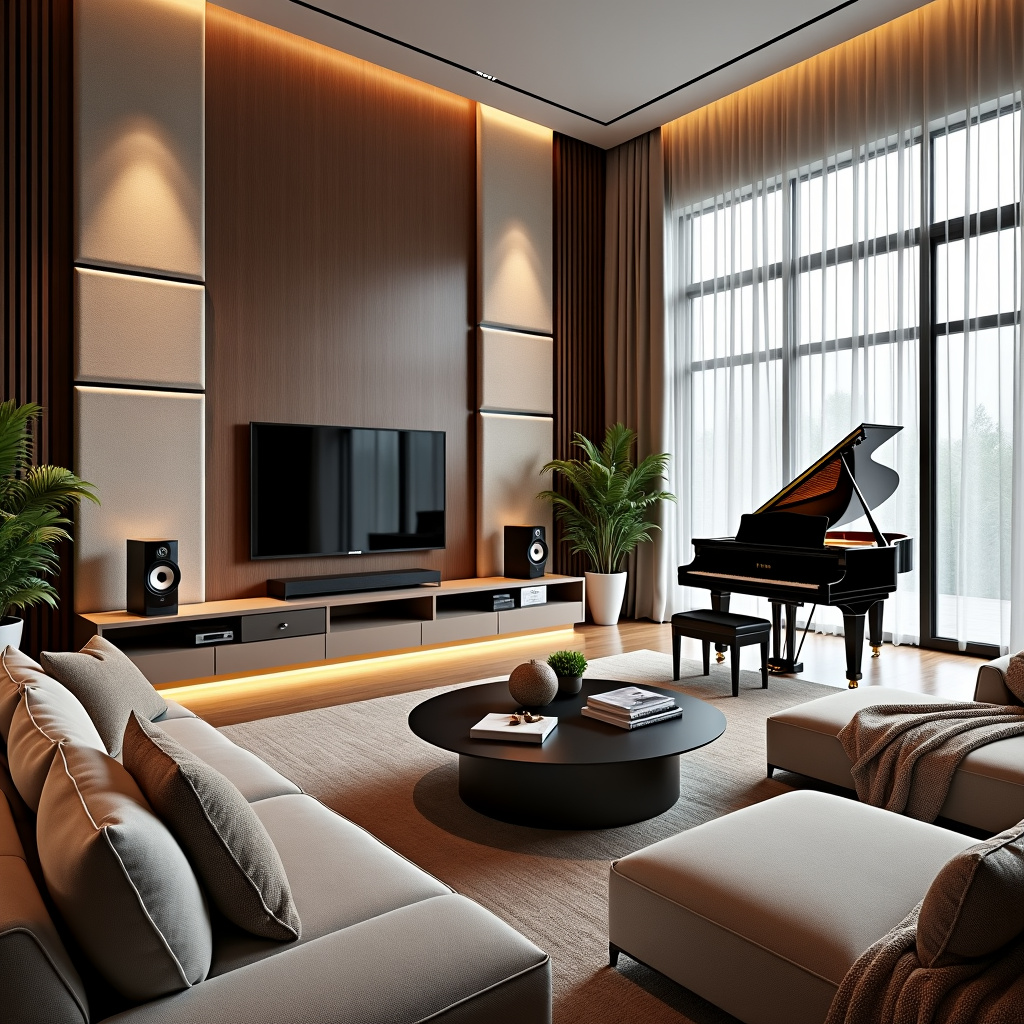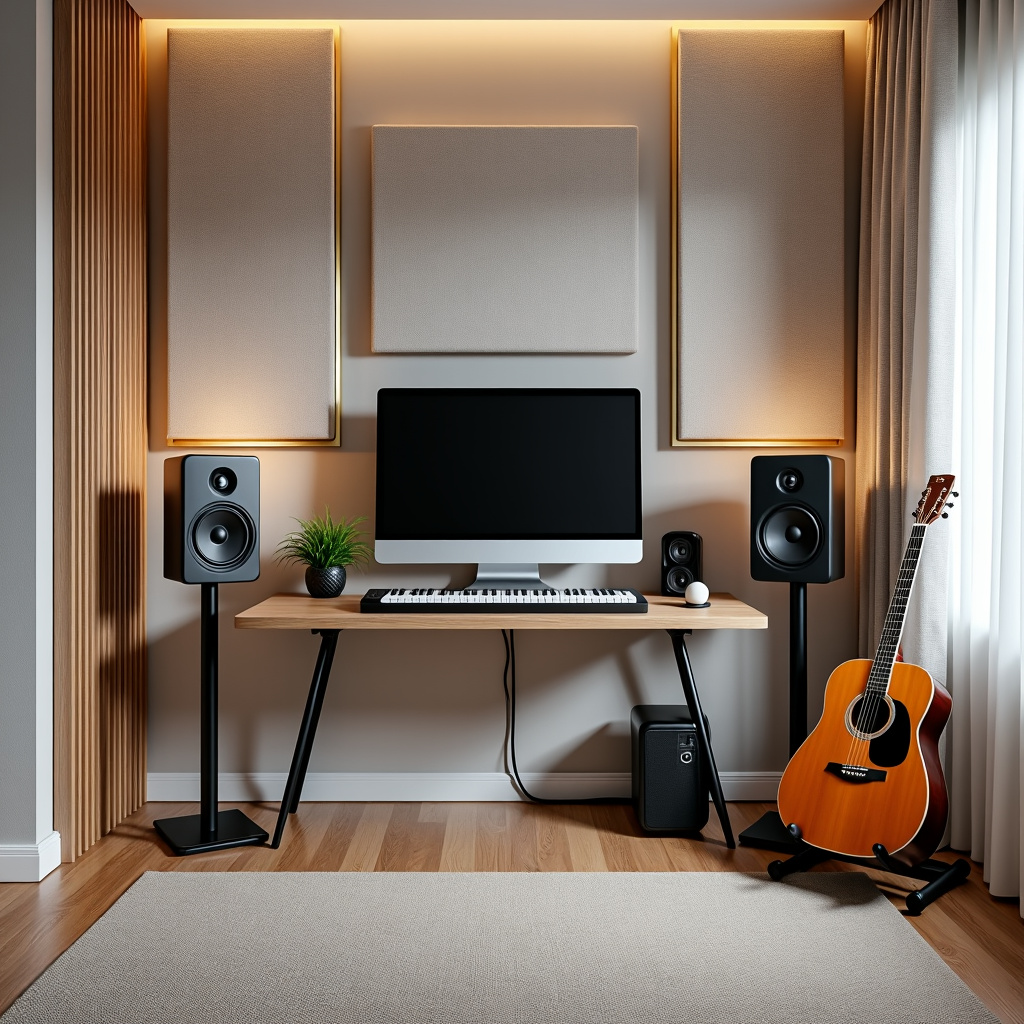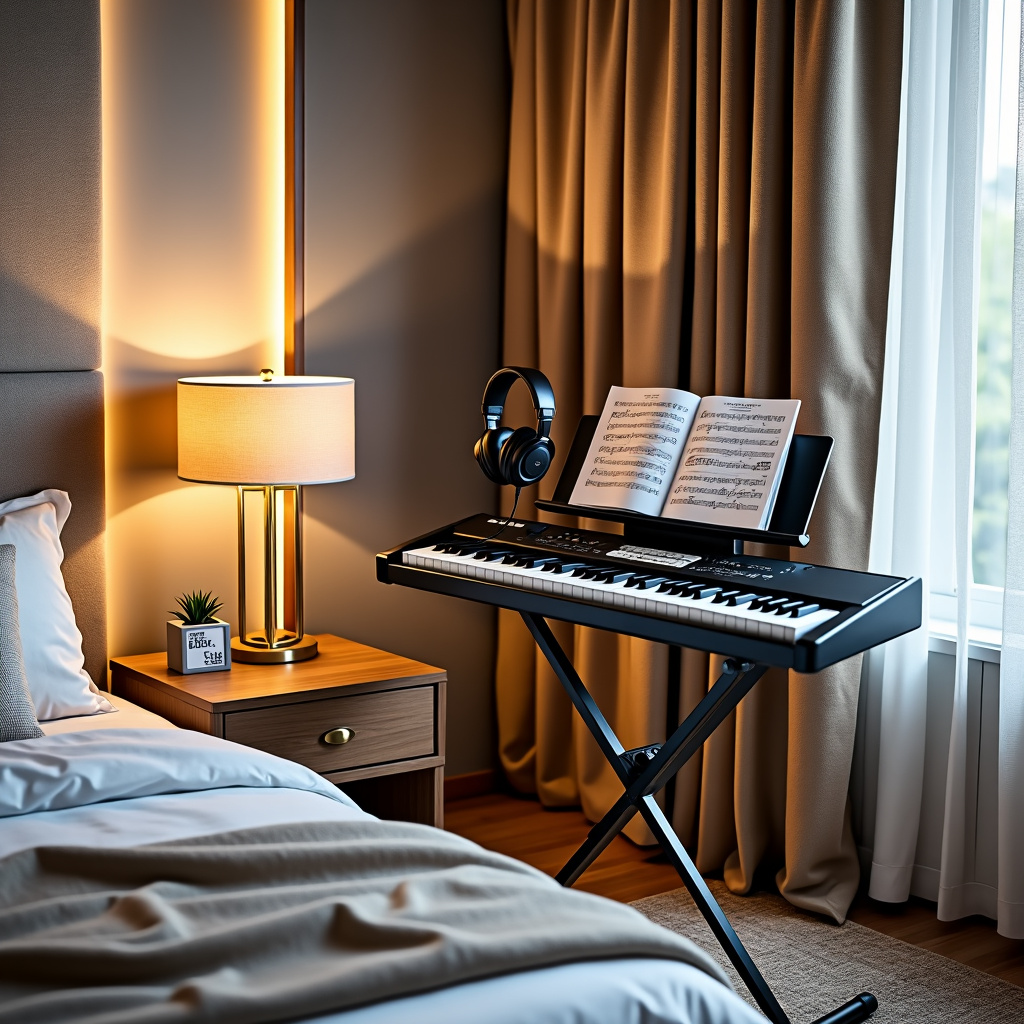Tune Your Room – Perfect Sound for Every Space
A curated guide to setting up ideal musical acoustics and mood depending on your space. For beginners and seasoned musicians alike.
Living Room Harmony
The living room is often the heart of musical expression in a home. With the right setup, you can create a space that enhances your instrument's natural sound while maintaining a comfortable environment for both playing and listening.
Acoustic Considerations
- ✓
Soft furnishings balance: Maintain a mix of sound-absorbing elements (curtains, rugs, sofas) and sound-reflecting surfaces (walls, hardwood floors) for natural reverb.
- ✓
Strategic placement: Position string instruments away from direct heat sources and air vents to prevent wood warping and frequent detuning.
- ✓
Humidity control: Maintain 40-60% humidity for optimal instrument health and sound quality.
Instrument-Specific Tips
- ✓
Piano placement: Position against an interior wall rather than exterior walls to minimize temperature fluctuations.
- ✓
Guitar acoustics: Try playing in different positions in your living room to find the "sweet spot" where your instrument resonates best.


Balcony Vibes
Balconies offer a unique opportunity to play in the open air while still enjoying the comfort of home. With some thoughtful adjustments, you can create an inspiring outdoor practice space.
Acoustic Tricks for Small Open-Air Spaces
- ✓
Sound projection: Position yourself in a corner to help direct sound back to you rather than dispersing it completely.
- ✓
Weather protection: Use retractable awnings or umbrellas to shield instruments from direct sunlight and unexpected rain.
- ✓
Wind considerations: Use portable windscreens for microphones if recording, and secure sheet music with proper holders.
Recommended Portable Instruments
- ✓
Ukulele: Lightweight, weather-resistant, and perfect for casual playing in small spaces.
- ✓
Cajón: Doubles as seating and provides rhythmic accompaniment without overwhelming neighbors.
- ✓
Saxophone: The natural projection works well in open air, but consider timing and neighbor sensitivity.
Studio Precision
Creating a home studio space requires attention to detail for optimal sound quality. Whether you're recording or simply practicing, these tips will help you achieve professional-level acoustics.
Soundproofing Essentials
- ✓
Acoustic panels: Place at first reflection points on walls to reduce echo and improve recording clarity.
- ✓
Bass traps: Install in corners to manage low-frequency resonance, especially important for bass instruments and drums.
- ✓
Door sealing: Use weatherstripping and door sweeps to prevent sound leakage and outside noise interference.
Monitor Placement & Instrument Calibration
- ✓
Speaker positioning: Form an equilateral triangle between your listening position and speakers, with tweeters at ear level.
- ✓
Instrument tuning: Use a high-quality tuner in your studio space, as room acoustics can affect perceived pitch.
- ✓
Digital calibration: Use room correction software to optimize your studio's acoustic response.


Bedroom Practice Zones
Practicing in your bedroom requires balancing your musical passion with consideration for others. With some creativity, you can create an effective practice space that won't disturb the peace.
Balancing Neighbors' Peace and Your Passion
- ✓
Time management: Establish regular practice hours that respect quiet times in your building or neighborhood.
- ✓
Sound dampening: Place a thick rug under your practice area and consider a portable sound shield for vocals or amplified instruments.
- ✓
Communication: Let neighbors know about your practice schedule and ask for feedback about noise levels.
Practical Solutions
- ✓
Headphone options: Use quality headphones with your electronic instruments or digital pianos for silent practice.
- ✓
Mutes and dampeners: Invest in quality mutes for brass and string instruments that reduce volume while maintaining tone.
- ✓
Practice pads: For drummers, a mesh head kit or practice pad set can reduce noise by up to 70% while maintaining feel.
"Remember, even Yo-Yo Ma had to practice somewhere before Carnegie Hall!" 🎵
Need Help Setting Up?
Contact our team for personalized tuning advice or book a home visit. Our experts can help you create the perfect acoustic environment for your instruments.
Contact Us